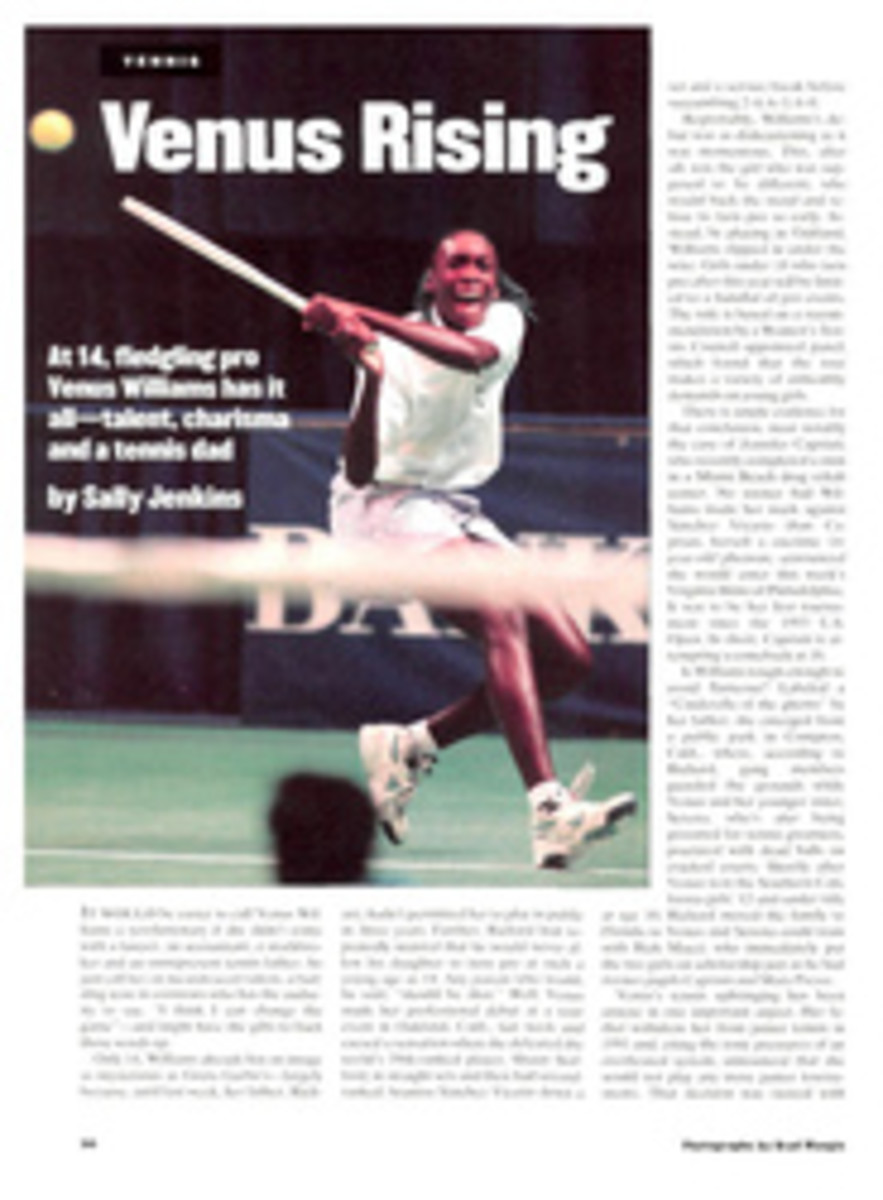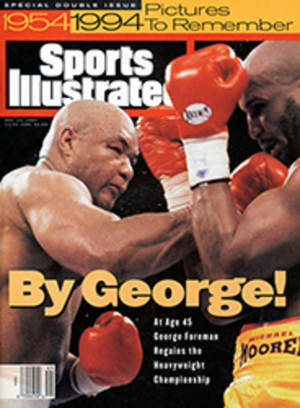
The Money Game
For Ivan Rais, the problem with playing golf in Czechoslovakia under the old Communist regime wasn't the dearth of equipment or the discomfiting feeling that every swing could put him in trouble with the authorities. Rais's problem was his dachshund, Ada. Not that other players on the scrubby course near Prague minded Rais's four-legged pal. But whenever Ada caught sight of one of the secret policemen who lurked on the edges of the course, keeping foreign diplomats and "subversive" Czech golf enthusiasts under surveillance, she turned into a fur-bearing Cruise missile. The dog would lock eyes with the agent and streak toward him, yelping, until Rais's stern commands forced her to stop short of her target. "She was," says Rais, the director of competition at the Marianske Lazne Golf Club, near the German border, "a very smart dog."
It's a pity Ada didn't live to see her mission accomplished. Since the Communists' ouster in 1989, golf—like the Czech Republic itself—has been swept free of secret police and released from the shackles of repression. Five years after the shift to a market economy, the country's motto seems to have changed from "Workers, you have nothing to lose but your chains" to "You have everything to gain on the links." The Czech Republic is teeming with wannabe capitalists, and many nascent corporate executives see a fast car and a smooth swing as the tickets to success. "We want to move toward the West," says Otakar Jurecka, vice chairman of Investioni Banka, the nation's third-largest bank, "and we know it is not possible without golf."
Throughout the country, Western and Czech golf-course developers are salivating over miles of recently privatized farmland whose owners are keen on selling. "With the exception of Mexico," says Michael Hurdzan, an Ohio-based course designer who has drawn up courses in the U.S. as well as abroad, "Eastern Europe—and, specifically, the Czech Republic—is the hottest area in the world right now for developing golf. I think it will grow at a fantastic rate over the next 20 years." Indeed, though courses are being financed in Poland, Hungary and the former East Germany, the golf boom is biggest in the Czech Republic, particularly around Prague, with its hordes of tourists and its burgeoning international business community.
Eighteen miles outside the city, at the year-old Karlstein Golf Club (the nation's first private club), newly rich Czechs are replacing the first divots on the club's back nine, which was completed last month. In the city proper, managers of the Erpet Indoor Golf Center, which also opened last month, were busy up to the last minute working the kinks out of four Full Swing simulators. The machines' color monitors let patrons take their whacks at the fairways of 12 foreign courses. The center also offers a 16-pad driving range where—for better or worse—the distance each ball travels flashes automatically on a screen. What's more, from Oct. 20 to 23 the Czech Republic was host to Eastern Europe's first PGA Volvo tournament, at Marianske Lazne Golf Club. There the likes of Seve Ballesteros and Bernhard Langer competed for points toward places on Europe's 1995 Ryder Cup team.
The 89-year-old Marianske Lazne club is magnificent, but four decades of Communist neglect have left most of the republic's other nine courses looking like cow pastures, and Czech Golf Federation executives joke about their country's lowly status in international competition. At a press conference for the '93 European Amateur Team Championships, which the Czechs staged at Marianske Lazne, federation president Hanus Goldscheider said with a smile, "Iceland or Greece will be our rival for last place—but we'll have the home advantage."
Meanwhile, the federation is trying to reestablish a rich national golfing tradition that was interrupted by the Communist era. It may be difficult to believe, but Czechoslovakia was once renowned for its golf resorts. The first Czech course opened in 1904 at the elegant spa town of Carlsbad, which, like all of what would become Czechoslovakia, was then part of the Austro-Hungarian Empire; the following year Britain's King Edward VII founded the course at Marienbad, another celebrated Czech spa, which the king visited to take the healing waters and, not incidentally, dally with his German mistress. Over the next 30 years Czech courses lured a host of golf-playing royals and dignitaries, and in 1937 Czechoslovakia, which had achieved independence in 1918, was a founding member of the European PGA.
But when the Communists seized control of the country in 1948 and the cold war began, golf dropped into a deep freeze. At least one course was dug up, and the commissars allowed only a small and capriciously selected number of players out of the country for amateur tournaments. The Communists deemed golf a "capitalist" sport—along with rugby, bowling and snooker, among others—and granted the golf federation only token funding. Equipment was so hard to come by that, Rais recalls, "if you were using a new ball, you were so nervous for fear you'd lose it."
Today, despite the welcome change in the fortunes of Czech golf, the federation's directors are somewhat wary of the developers who have recently invaded their turf—not without reason, it turns out. One U.S. developer, James Finn, arrived in Prague in 1991 and promptly announced his plans for International Golf Praha, two golf courses and a luxury housing community he proposed to build a few miles outside Prague. Lured by Arnold Palmer's commitment to design the course, the Prague branches of AT&T, Price Waterhouse and American Express, as well as some of the largest Czech banks, were interested. But after two years, in October 1993, Finn abruptly abandoned the project, Palmer's design group canceled its contract with Praha, and the plan dissolved.
The new crowd's emphasis on exclusivity at its golf clubs also rankles old-guard federation members. During the Communist days golf courses were at least public and affordable. But Karlstein charges $7,000 for an individual membership. That's more than three times the Czech Republic's average annual salary. "Karlstein is not looking for good golfers," says Goldscheider. "They're looking for rich people."
He is right—as Karlstein's directors readily admit. The club is trying to cash in on the Czech fascination with Western culture by fashioning itself as a place for Prague's beautiful people. "Part of our marketing strategy is for, how you say, 'snobs,' " said Karlstein's marketing director, Stanislov Broc, during the first membership campaign, in June 1993. "They don't want the golf course for sport, but they want to be among the important people of Prague. I think about 80 percent of our members aren't golfers now, but they want to be, because they believe in Europe and the U.S. it's not possible to be a higher-class person without playing golf."
The strategy seems to be working: Karlstein's membership list already has nearly 400 names, including those of the heaviest hitters in the Prague business community. What remains to be seen is whether they can perform as well on the course as they do in the boardroom. Karlstein began offering beginners' golf classes in May 1993, and within four months more than 200 corporate executives had enrolled or were on wailing lists. "Just as we're trying to gain Western technology, so are we trying to develop a Western business culture," says Aladar Blaas, standing in a patch of knee-high weeds on the same course where Ivan Rais's dog once pestered secret policemen. "And we understand golf as a part of the business culture."
Blaas, a bank director, decided that 25 of his executives simply had to learn the game. Having had 20 hours of indoor instruction, he and eight others are out on the course for the first time—and Blaas is not enjoying a banner day. His first tee shot has landed him in the rough. To add insult to injury, the instructor reprimands Blaas for talking too loudly during a coworker's setup. But Blaas seems to accept that even captains of industry must bow to the protocol of a sport that is considered a path to a brave new world.
"It's all part of the game," Blaas says, grinning as he scampers off to find his ball. Plenty has changed here in the Czech Republic, but those white, dimpled spheres are still hard to come by.
PHOTO
NORBERT SCHMIDT
Karlstein, outside Prague, lures not only seasoned golfers but also unseasoned business executives.
TWO PHOTOS
NORBERT SCHMIDT
Unlike Blaas (below), many regulars at Karlstein's clubhouse barely know how to swing an iron.
Cindy Hahn is the sports editor of The Prague Post, an English-language newspaper.

